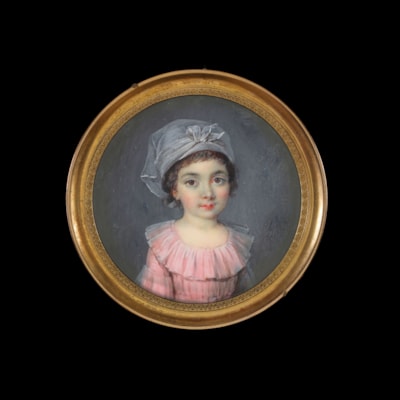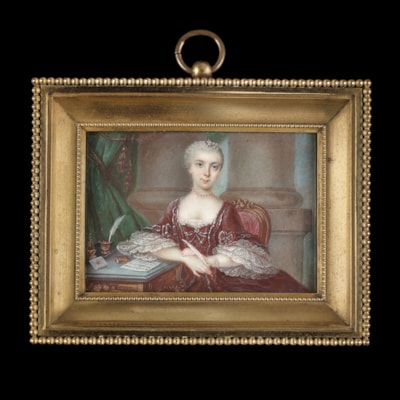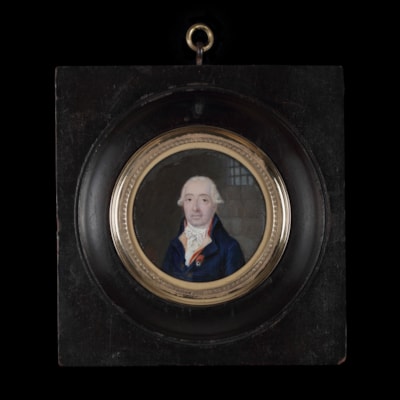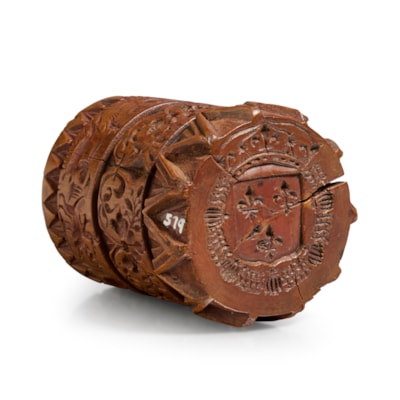FRENCH SCHOOL (18th century)
A double-sided hairwork miniature, the front decorated with a couple in a garden, with ‘Je me tache ou je meurs’ inscribed on a pedestal, also decorated with two flaming hearts, the pedestal surmounted by a cupid, the other with a woman fleeing through a garden, with ‘Amicizia’ inscribed on a pedestal
Circa 1780s
Oval, 7.8 cm (3 ¹/₈ inches) high
Hairwork on ivory (licence number: WNGYYNRA)
Gold plated frame
RESERVED
The words formed from the hair in the two scenes here further support this meaning. On the front of the pendant, in which a man and woman hold hands surrounded by plants, the phrase ‘I stain myself or die’ (translated), can be seen on a pedestal. On the same pedestal, there is a cupid, his bow and arrows laid down, and a pair of flaming hearts, presumably meant to symbolise those of the couple. On the other side of the pendant, a woman, likely to be the same woman, runs away from a temple1 with a wreath in her hand. In this scene, her hair is uncovered and flows behind her; she runs towards a pedestal inscribed ‘Friendship’ (translated). The urn atop this pedestal implies that it is a memorial to friendship, rather than a symbol of the woman running towards friendship. Therefore, the story told by this miniature is one of unbreakable love at the sacrifice of this woman’s friendship with others.
This is rather unlike the story of Marie Antoinette, whose life was almost totally dependent on her friendships with the women of her court. Nevertheless, the symbolism of hair was still one that was important to her. Throughout her time as Dauphine, she became recognised for her hairstyles, including a famous example in which a realistic model of a French Man O’ War was placed within her wig. In her death, her hair also became an important memento of her character. A locket in the British Museum2 is believed to have a locket of her hair inside of it, however there is no concrete evidence to support this claim. Nevertheless, the fact that this locket has a note in it dated to 1853 exemplifies the important status that this part of Marie Antoinette’s look held, not only at the time of her reign, but also in the following centuries.
1. The style of this temple is reminiscent of Marie Antoinette’s Temple de l’amour in Le Petit Trianon.
2. Collection no. 1978,1002.1202

shipping notice
Worldwide shipping is included in all prices.
The Limner Company does not accept any responsibility for import duty, this is to be paid by the buyer.
Some stock items contain materials from endangered species which are governed by CITES regulations and will require a permit to export outside of Great Britain. If a certificate of export is required then this will be the responsibility of and paid for by the buyer .
you may also like



 +44(0)7983510056
+44(0)7983510056











